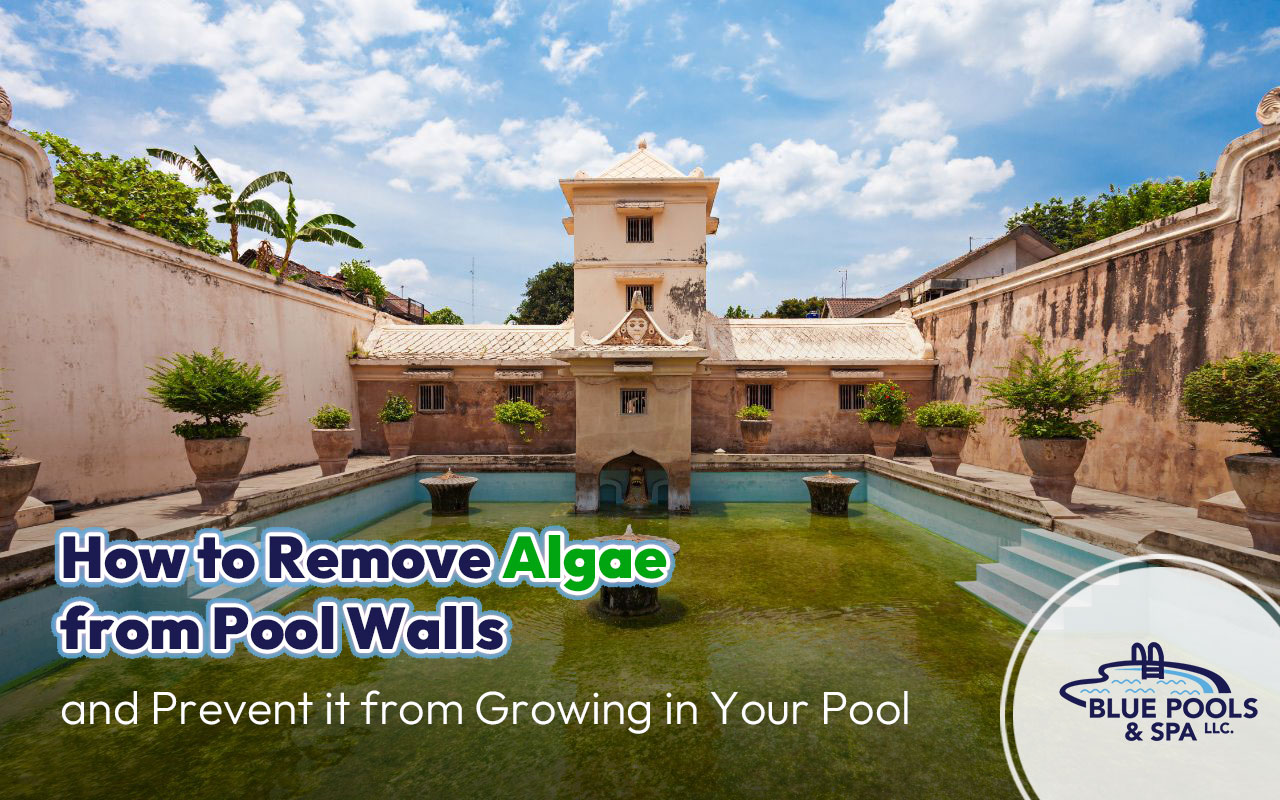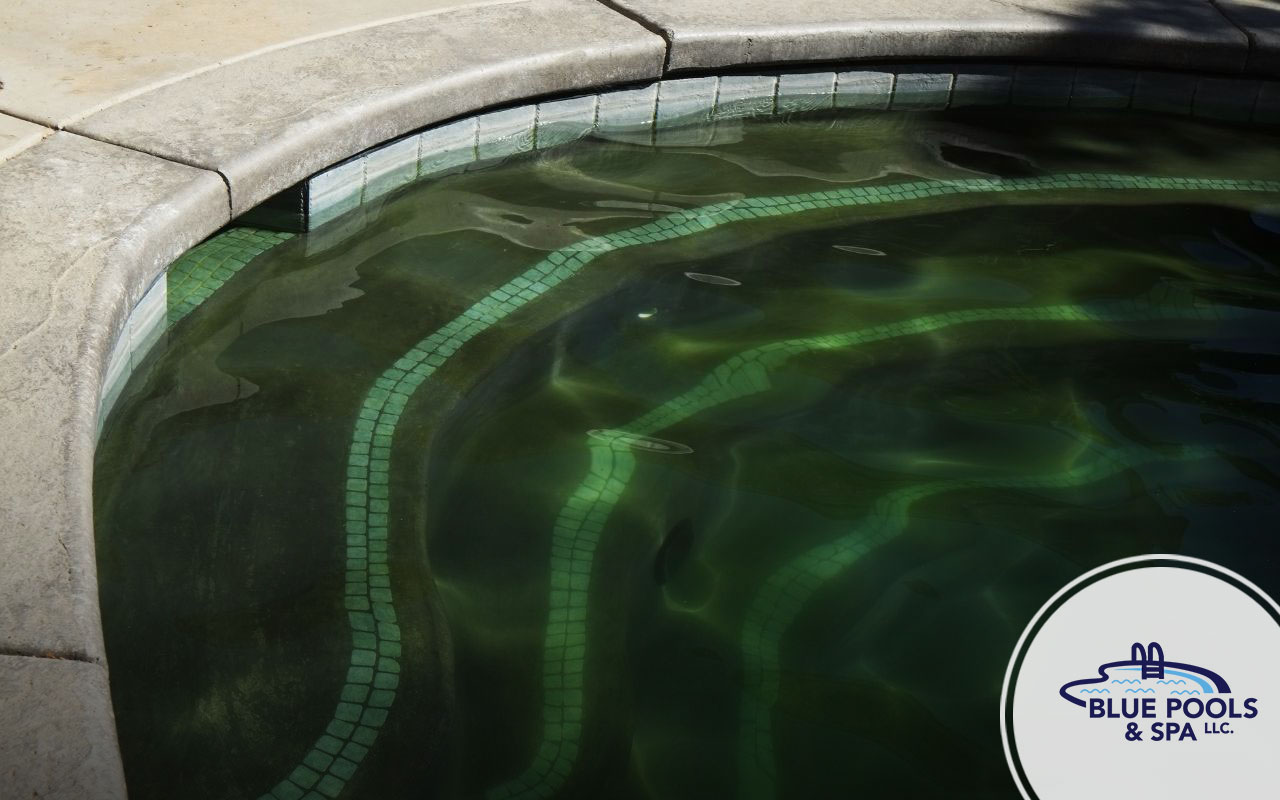
Looking to enjoy a refreshing swim in your pool this summer? Ensure your swimming pool has no unwanted guests in the form of algae. A swimming pool in your backyard is an excellent source of fun and relaxation. But if you notice algae growth on the walls or floor of your pool, it can be an eyesore and hazardous to swimmers, and you want to learn how to remove algae from pool walls.
Moreover, algae can also clog your filtration system, lower the chemical balance of your pool, and make it challenging to keep the water clear. This blog will discuss effective ways to remove algae from pool walls and prevent it from growing in your pool again.
Understanding Algae Growth in Pools
Algae are single-celled aquatic plants that grow in the water and on constantly moist surfaces. Algae can thrive and reproduce rapidly when the conditions are right, such as warm temperatures, high sun exposure, and low chlorine levels. Once algae forms in your pool, removing it can be challenging without proper cleaning measures.
Different Types of Pool Algae
To properly understand the steps you need to take to get rid of algae and prevent it from returning, you must first understand the different types of pool algae. The most common types of pool algae are:
Green Algae
Green Algae are the most common form of algae found in swimming pools. Its green color and slimy texture can quickly identify it. Green algae grow on the pool walls and floors, quickly covering the entire pool, making it look cloudy.
Mustard Algae
Mustard algae are yellow-colored algae that typically grows on pool walls, in corners, and in shady spots. It is harder to remove than green algae, and it’s more resistant to chlorine.
Black Algae
Black algae are the most challenging algae to remove from your pool walls. It has a black or blue-green appearance and forms deep-rooted colonies that can quickly spread throughout your pool walls and floors.
Effective Techniques for Getting Rid of Algae on Pool Walls
There are several effective techniques for getting rid of algae growth on pool walls, including:
Brushing the Walls
Brushing the walls is one of the simplest and most effective ways to remove algae from pool walls. You need a pool brush that reaches your pool walls’ entire length and width. Using a gentle scrubbing motion, starting at the top and moving to the bottom, brush off the algae from the surfaces of the walls.
Shock Treatment
If the algae growth on your pool walls is substantial, brushing alone may not remove it all. Shock treatment involves adding a large dose of chlorine or other oxidizing agents to the water to kill the algae and other bacteria present. Shock treatment also helps to improve the chemical balance of the water, which can prevent further growth of algae.
Algaecides
Algaecides are specialized chemicals specifically formulated to kill algae and prevent their growth in the pool. They come in liquid, powder, or tablet form, and they work by breaking down the cell walls of algae, which eventually kills them. Algaecides are typically added directly to the pool water and left to circulate for a few hours.
Chlorine Tablets
Chlorine is an effective sanitizer and algaecide that kills algae and bacteria in pool water. Also, chlorine tablets are a convenient and efficient way to keep your pool free of algae. You can add the tablets to your pool skimmer or a floater, and they dissolve slowly, releasing chlorine into the water over time, which keeps algae growth in check.
Essential Steps for Preventing Algae Growth in Your Pool

Preventing algae growth in your pool is easier and less time-consuming than removing it. Here are some essential steps to prevent algae growth in your pool:
Regular Maintenance
Regular maintenance of your pool is essential to prevent the growth of algae. Thus, check the pH levels of your pool water regularly, test the water’s chemical balance, and add the right amount of chlorine to prevent algae growth.
Scrubbing Your Pool Walls
Using a pool brush to scrub the walls of your pool regularly can prevent the growth of algae. Scrubbing not only removes algae, but also any biofilm buildup on the pool walls that may foster algae growth.
Circulate the Water
Circulating the water in your pool regularly will help prevent algae growth. The pool pump should be run for at least 8 hours a day to circulate the water and prevent stagnant water from accumulating, which can cause algae to grow.
Keep Your Pool Covered
Keeping your pool covered when not in use can prevent sunlight from entering the pool, reducing the chances of algae growth. Additionally, it can keep debris and contaminants from accumulating in your pool water, which can act as a breeding ground for algae.
Keeping Your Pool Algae-Free with Our Reliable Pool Maintenance Service
Algae growth is a common problem for pool owners. With the tips and techniques discussed in this blog, you can remove algae from your pool walls effectively and, most importantly, prevent it from growing again.
Therefore, regular maintenance and monitoring of chemical levels can help you keep your pool clean and algae-free. Remember to use high-quality chemicals and equipment to keep your swimming pool sparkling clean and ready to use. If you want professional assistance, contact us for our pool maintenance service; we cover Suffolk County, NY!
